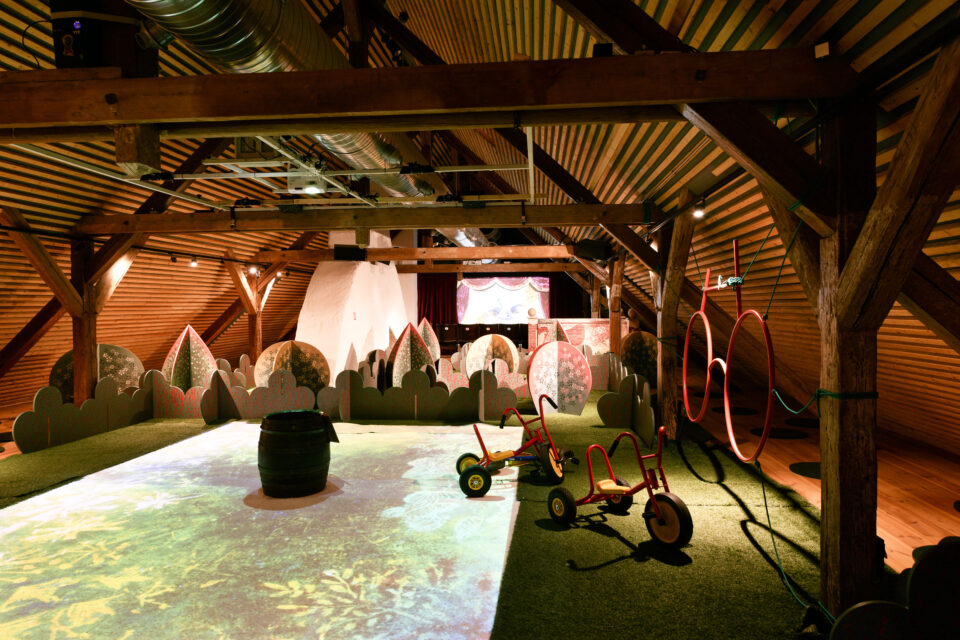This exhibition – organized to mark the 50th anniversary of the death of artist, illustrator, author, sculptor, screenwriter, puppeteer, costume designer, animated film director, and founder of Czech animated film Jiří Trnka – consists of two parts.
The idea behind the first part of the exhibition is based on how Trnka himself understood art. Besides being a “serious” artist who, especially in his later films, expressed his views on sometimes heavy topics such as the dehumanization of society, man’s relationship to technology, or the question of artistic freedom in a totalitarian system, he was by nature a magician and illusionist who wanted to entertain and surprise viewers, to create a sense of amazement. His original approach to exhibiting – as expressed primarily in his work on two world’s fairs in Brussels (1958) and Montreal (1967), his sense for scenography, his imagination and his distinctive poetic style – all inspired the project’s visual style and design. At the centre of the exhibition’s first part is a meticulously chosen and well-considered selection of items that fully trace the main areas that Trnka worked in during his life and in which he gained fame at home and abroad: painting, illustration work, sculpture, puppetry, and animated film.
However, the exhibition aims to offer visitors more than just paintings and sculptures in an exhibition space, labelled with the obligatory descriptions. With an eye to the changes that the field of exhibiting has undergone in recent years, and with an awareness of visitors’ growing demands, the curators hope to translate Trnka’s legacy into a contemporary language that will attract older conservative audiences as well as young gallery-goers, all the while offering a high-quality counterbalance to today’s predominantly foreign and commercial exhibitions. With this goal in mind, the exhibition’s creators have put together a series of audio-visual works and interactive installations tracing the aforementioned areas of Tranka’s artistic activities in a fresh and entertaining manner. This is the second (one might say “entertaining”) pillar on which the exhibition’s concept rests: a shift away from traditional exhibitions towards a more visually attractive design.
The second part of the exhibition project, TRNKA’s THE GARDEN 2, has been specially adapted to the generous interior of the Jesuit College. Its ambition is to bring to life Trnka’s best known and most successful children’s book, The Garden. This book, in which five young boys on their way to school discover an old and abandoned garden in which they have a series of unexpected encounters and joyful adventures, is both fun and inspirational.
The exhibition’s curators have fully respected the author’s imagination, but with an awareness that a merely mechanical visual presentation of the book’s characters would not satisfy children today. And so the exhibition makes use of modern technology to further develop the main story in order to fully bring to life the book’s visual and literary qualities. The emphasis is on interactivity and on the attractiveness of the various animations and audio-visual effects. Whether you have read and love the Trnka’s original The Gardenor not, you are sure not to be disappointed.
The exhibition has been well-received both in the media and by visitors.







